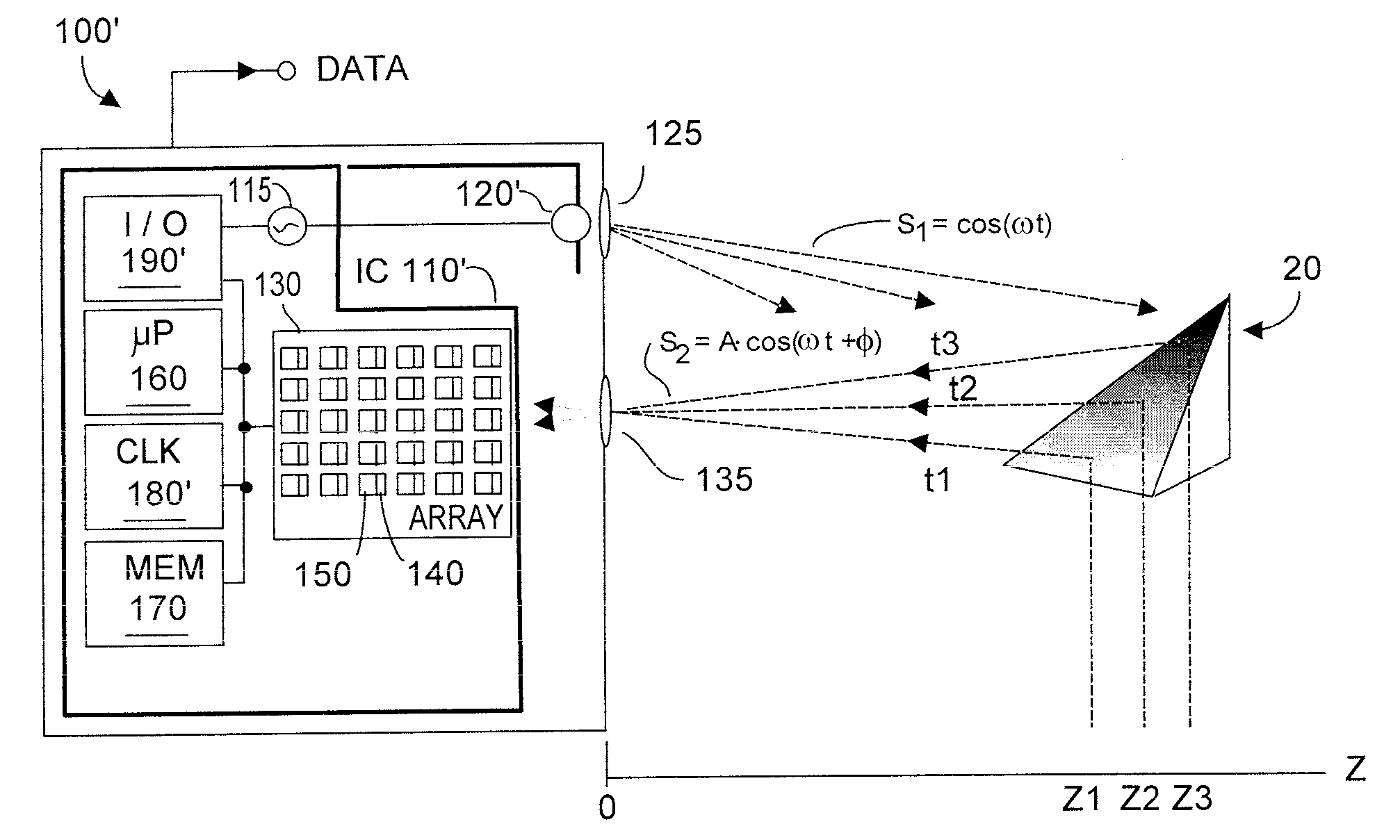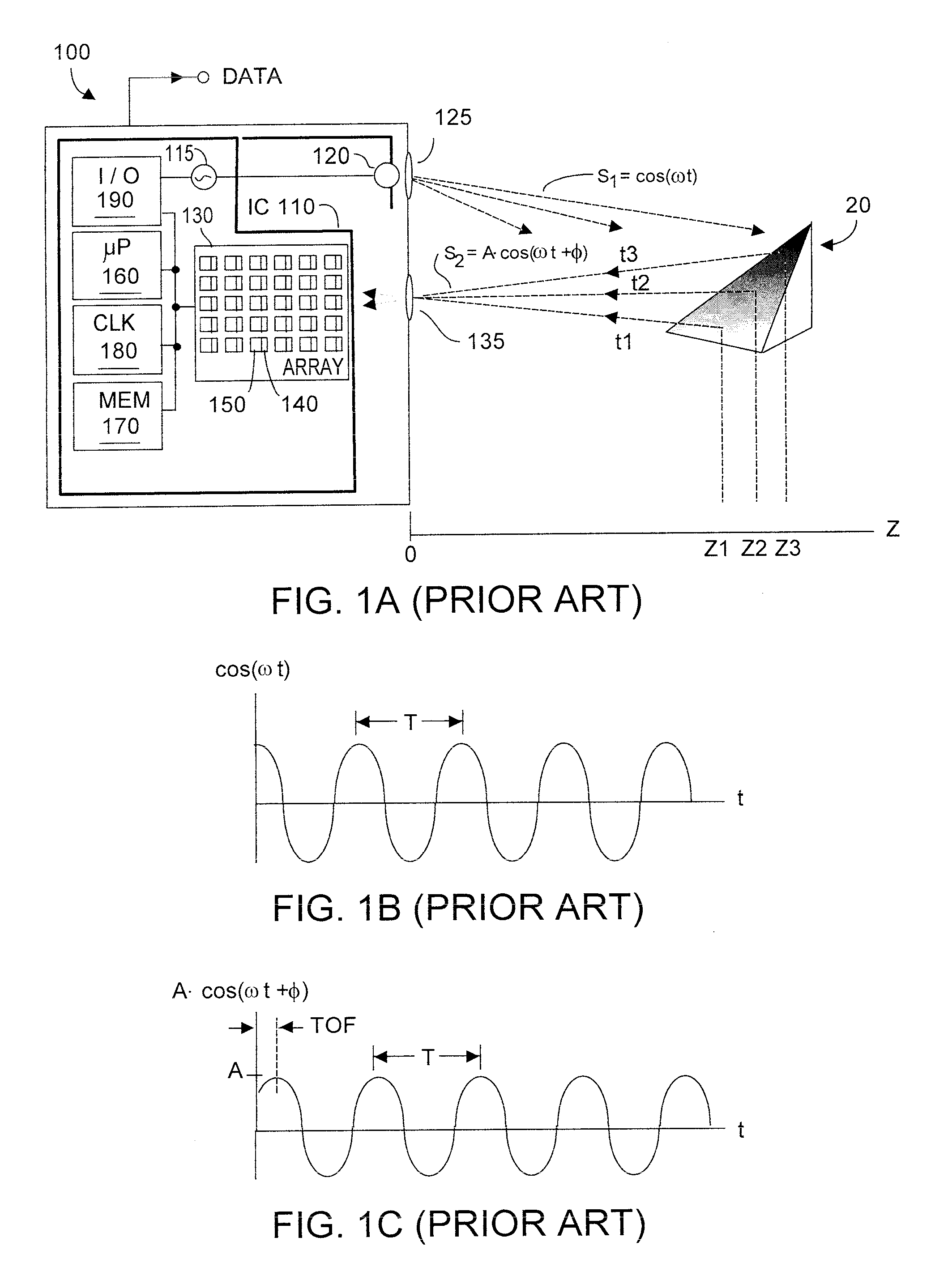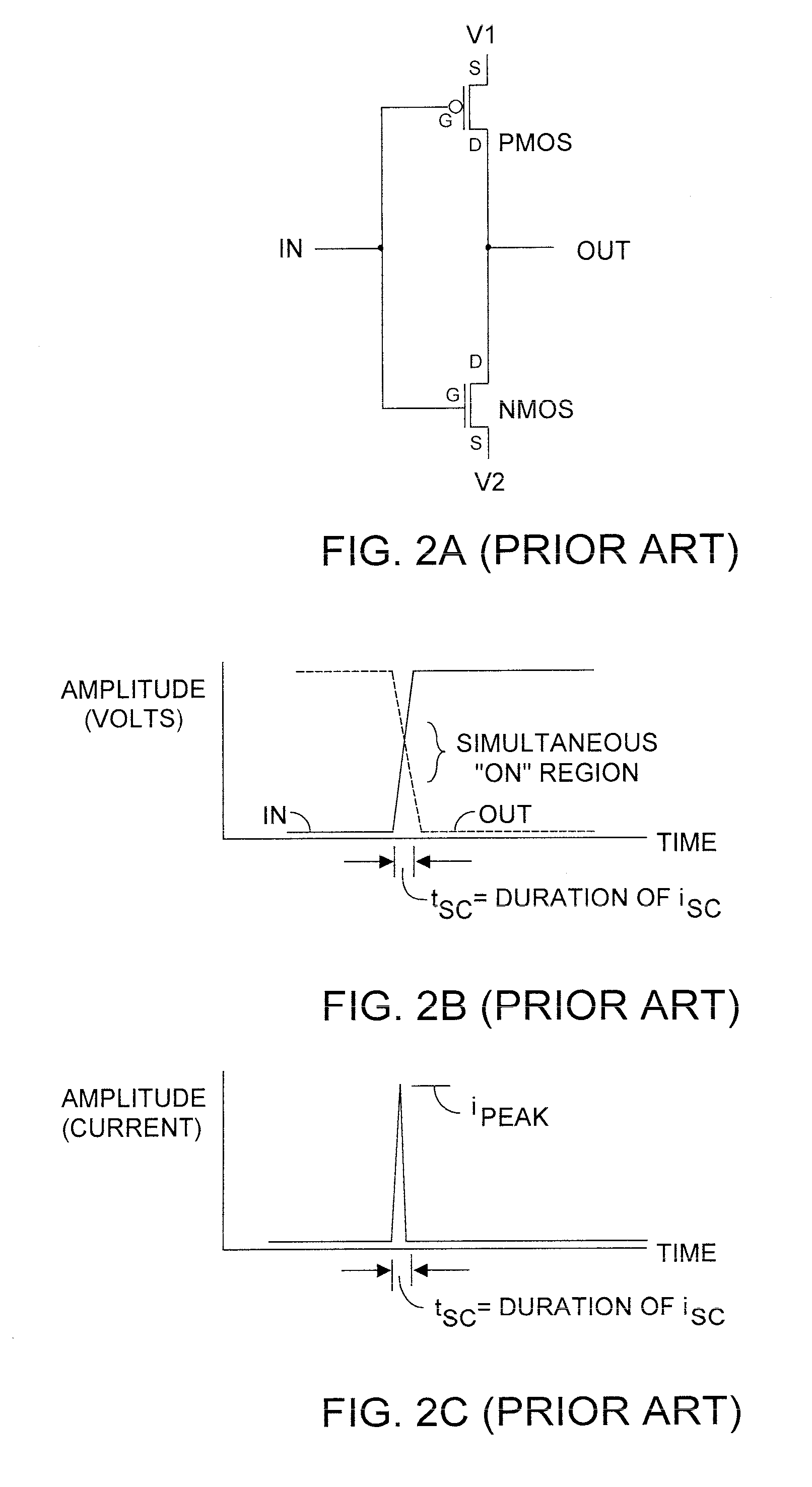Charge equalizing clock driver and other enhancements for time-of-flight depth sensing and other systems
a clock driver and depth sensing technology, applied in the field of charge equalizing clock driver, can solve the problems of high power dissipation, large total cumulative capacitive load of clock driver, and often consuming substantial operating power of clock driver circuitry, and achieve the effect of substantial capacitive load and substantial operating power loss
- Summary
- Abstract
- Description
- Claims
- Application Information
AI Technical Summary
Benefits of technology
Problems solved by technology
Method used
Image
Examples
Embodiment Construction
[0045]FIG. 3 depicts a TOF depth system 100′ that is similar to system 100 shown in FIG. 1A, but for components called out with different reference numerals, e.g., clock unit 180′, input / output unit 190′, optionally emitter(s) 120′, and IC 110′. Thus operation of TOF system 100′ is similar or identical to operation of system 100 shown in FIG. 1, but for the improvements described herein.
[0046]In one embodiment, an improved clock driver architecture for driving an array 130 of pixel detectors such as found in a TOF system 100′ is provided, as is a method for driving such arrays. The clock driver may be implemented as part of clock unit 180′ in TOF system 100′ in FIG. 3, and outputs first and second preferably complementary clock signals whose duty cycle is preferably substantially 50%, i.e., square-wave, but may in fact have a duty cycle other than 50%. In a TOF image system application, the first and second clock signals alternately steer detection photocurrent to different CMOS pix...
PUM
 Login to View More
Login to View More Abstract
Description
Claims
Application Information
 Login to View More
Login to View More - R&D
- Intellectual Property
- Life Sciences
- Materials
- Tech Scout
- Unparalleled Data Quality
- Higher Quality Content
- 60% Fewer Hallucinations
Browse by: Latest US Patents, China's latest patents, Technical Efficacy Thesaurus, Application Domain, Technology Topic, Popular Technical Reports.
© 2025 PatSnap. All rights reserved.Legal|Privacy policy|Modern Slavery Act Transparency Statement|Sitemap|About US| Contact US: help@patsnap.com



